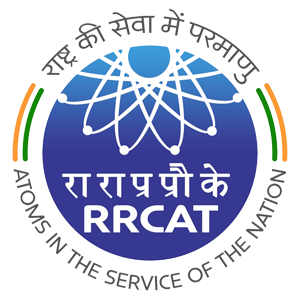|
Indus-1 |
|
Fig.5 shows a view of Indus-1 storage ring. It has a circumference of 18.97 m in which four combined function 90° bending magnets and 16 quadrupole magnets are arranged in four identical cells. Each unit cell has a 1.3 m long straight section. Two straight sections are used for beam injection; one section accommodates the septum magnet and the other, diametrically opposite to it, has a pulsed kicker magnet to inject electron beam into the ring. Another straight section accommodates an RF cavity operating at a frequency of 31.613 MHz. Synchrotron radiation is tapped from 3 bending magnets. Each bending magnet vacuum chamber has 2 ports, one at 10° and another is at 50° for tapping the emitted synchrotron radiation.
|
Fig. 5: A view of the Indus-1 storage ring |
Main parameters of Indus-1 are given in Table 1 above. Spectral brightness variation with photon energy for Indus-1 is shown in Fig.6.
|
Fig.6: Spectral brightness of Indus-1 synchrotron radiation source |
Indus-1 was commissioned in 1999. Since February 2010 it is being operated in the round-the-clock mode. The beam lifetime of Indus-1 is about 125 minutes at 100 mA. The ring is refilled number of times as per the requirements of the users. Fig-7 shows typical multiple fillings in Indus-1 during 24 hour operation.
|
Fig.7 Multiple fillings in Indus-1 during a day |
Indus-1 Beamlines
Indus- 1 has six operational beamlines which are available to users for experiments in round the clock mode.
|
|
|













